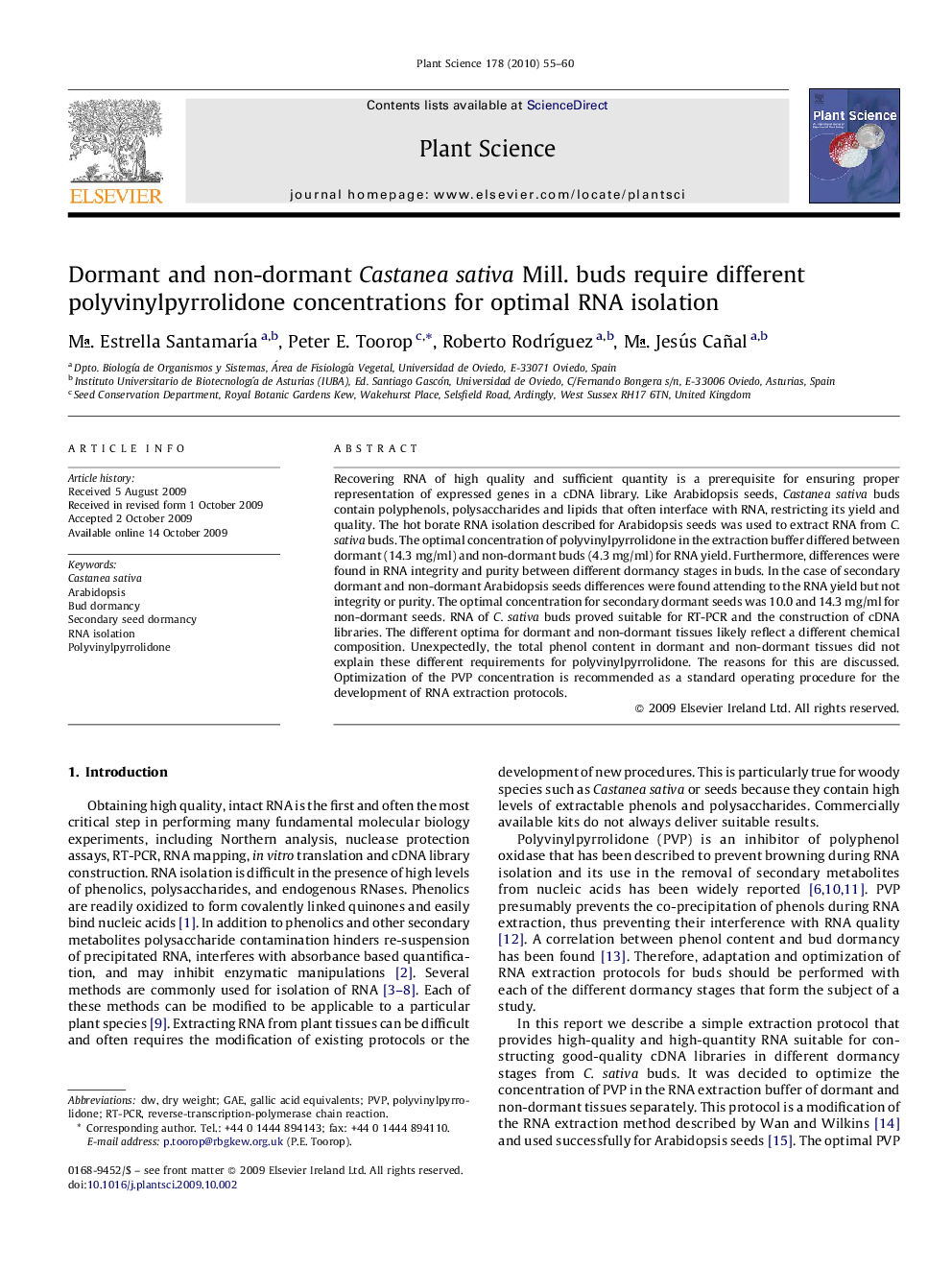| Article ID | Journal | Published Year | Pages | File Type |
|---|---|---|---|---|
| 2017915 | Plant Science | 2010 | 6 Pages |
Recovering RNA of high quality and sufficient quantity is a prerequisite for ensuring proper representation of expressed genes in a cDNA library. Like Arabidopsis seeds, Castanea sativa buds contain polyphenols, polysaccharides and lipids that often interface with RNA, restricting its yield and quality. The hot borate RNA isolation described for Arabidopsis seeds was used to extract RNA from C. sativa buds. The optimal concentration of polyvinylpyrrolidone in the extraction buffer differed between dormant (14.3 mg/ml) and non-dormant buds (4.3 mg/ml) for RNA yield. Furthermore, differences were found in RNA integrity and purity between different dormancy stages in buds. In the case of secondary dormant and non-dormant Arabidopsis seeds differences were found attending to the RNA yield but not integrity or purity. The optimal concentration for secondary dormant seeds was 10.0 and 14.3 mg/ml for non-dormant seeds. RNA of C. sativa buds proved suitable for RT-PCR and the construction of cDNA libraries. The different optima for dormant and non-dormant tissues likely reflect a different chemical composition. Unexpectedly, the total phenol content in dormant and non-dormant tissues did not explain these different requirements for polyvinylpyrrolidone. The reasons for this are discussed. Optimization of the PVP concentration is recommended as a standard operating procedure for the development of RNA extraction protocols.
